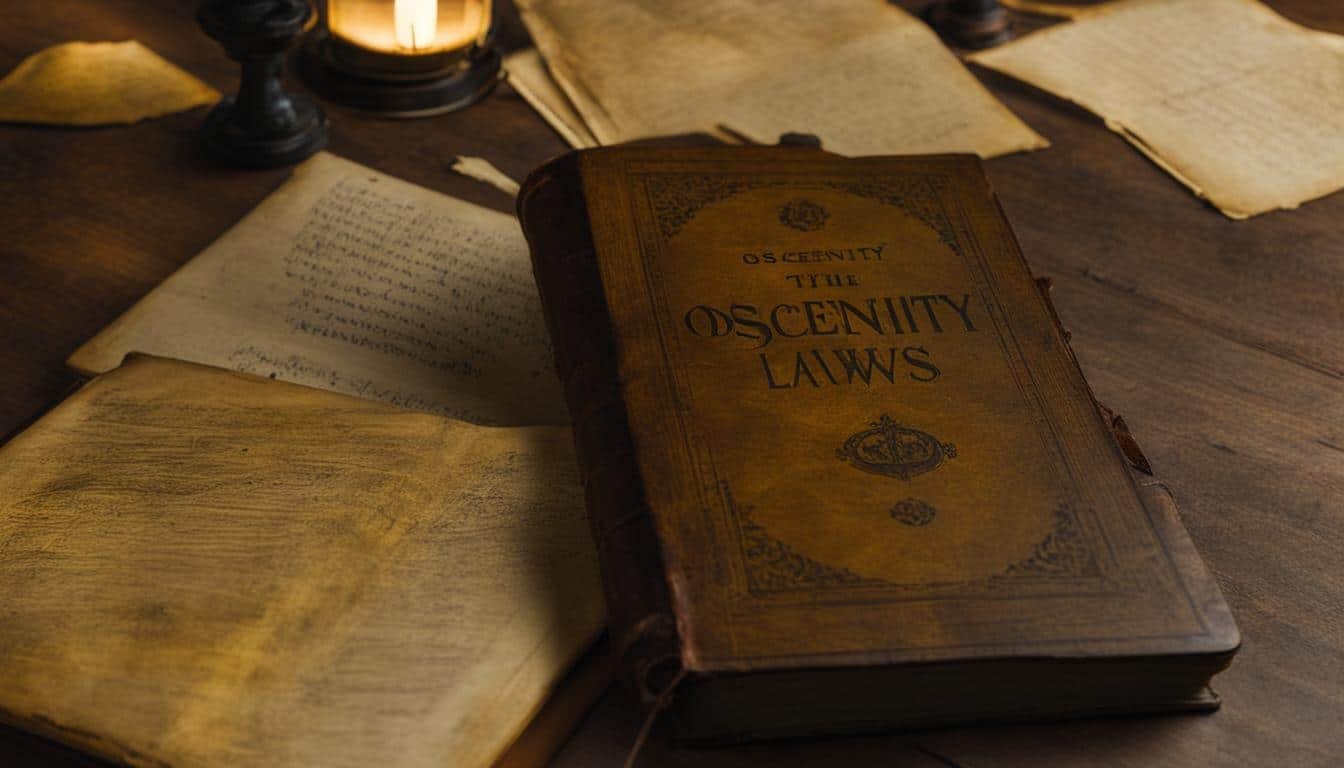Preventing online obscenity offenses is crucial to safeguard your internet experience and protect your digital identity. It is important to understand the significance of preventing these offenses and the legal framework surrounding them.
Key Takeaways:
- Preventing online obscenity offenses is vital to safeguarding your internet experience.
- Transmission of obscenity and child pornography is illegal under federal law.
- Obscenity is not protected under First Amendment rights.
- The Miller test is used to determine if material is obscene.
- Federal law prohibits distribution of obscene matter to minors.
Understanding Obscenity Law and Its Application
When it comes to the regulation of obscenity, the Miller test serves as a legal framework to determine what falls within the boundaries of protected speech. This test takes into account community standards, prurient interest, patently offensive sexual conduct, and lack of serious value. Under federal law, there are statutes in place that prohibit the distribution, transportation, sale, and production of obscene material. However, the application of obscenity law becomes more complex in the digital age.
The internet, with its vast reach and decentralized nature, presents unique challenges for the prosecution of obscenity offenses. Jurisdiction and community standards can vary across different online platforms, making it difficult to enforce consistent regulations. Nevertheless, existing federal statutes, such as 18 U.S.C § 1462 and 18 U.S.C § 1465, can be used to prosecute obscenity offenses online, albeit with certain limitations.
To illustrate the intricacies of obscenity law, let’s take a closer look at a table that outlines the key federal obscenity statutes and their applications:
| Statute | Description | Application |
|---|---|---|
| 18 U.S.C § 1462 | Prohibits the transportation of obscene material through interstate or foreign commerce | Applies to the distribution of obscene material online |
| 18 U.S.C § 1465 | Makes it illegal to knowingly use a communication facility to transmit obscene material | Covers the online transmission of obscene content |
While these statutes provide a basis for prosecuting obscenity offenses, their effectiveness is contingent upon factors such as jurisdiction, interpretation, and technological advancements. Additionally, obscenity law must navigate the delicate balance between regulating offensive material and respecting First Amendment rights. It remains an ongoing challenge to uphold the principles of the Constitution while addressing the complexities of obscenity in the digital realm.
Constitutional Principles and the First Amendment
When it comes to regulating obscenity, the United States adheres to constitutional principles set forth in the First Amendment. While the First Amendment protects freedom of speech, it does not shield obscenity and child pornography from legal consequences. It is important to understand the distinction between protected speech and obscenity in order to maintain a balance between individual rights and societal interests.
The Miller test is utilized by U.S. courts to determine if material is obscene. This test considers factors such as prurient interest, patent offensiveness, and lack of serious value. Content that meets these criteria can be banned based on the social interest in maintaining order and morality.
Furthermore, zoning and licensing ordinances play a role in regulating the location and operation of adult establishments. While these regulations aim to protect communities, they must be carefully crafted to avoid unduly restricting protected speech. The possession of obscene material for private use is protected, but the distribution or acquisition of such material is not.
It is essential that federal obscenity prosecutions adhere to the limitations outlined in the Miller and Reno decisions. Additionally, regulations that safeguard minors may restrict non-obscene pornography under the Miller test, as long as they are narrowly drawn and do not impede on protected speech.
Source Links
- https://www.justice.gov/criminal-ceos/obscenity
- https://americarenewing.com/issues/combating-obscenity-on-the-internet-a-legal-and-legislative-path-forward/
- https://www.everycrsreport.com/reports/95-804.html







